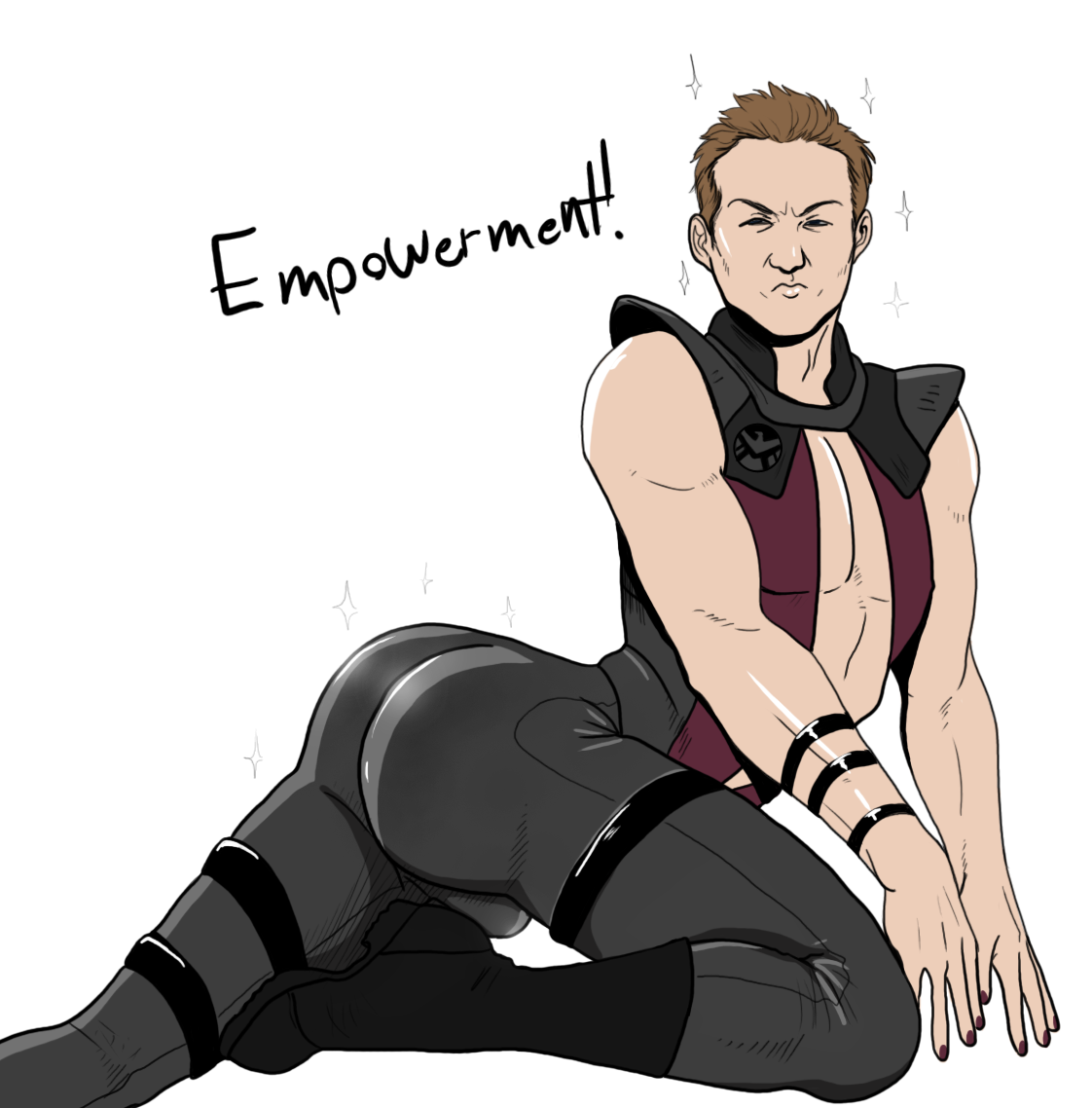By: Emma Aird

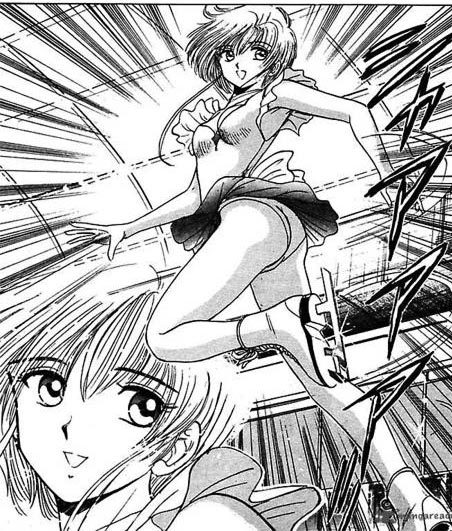
|

|
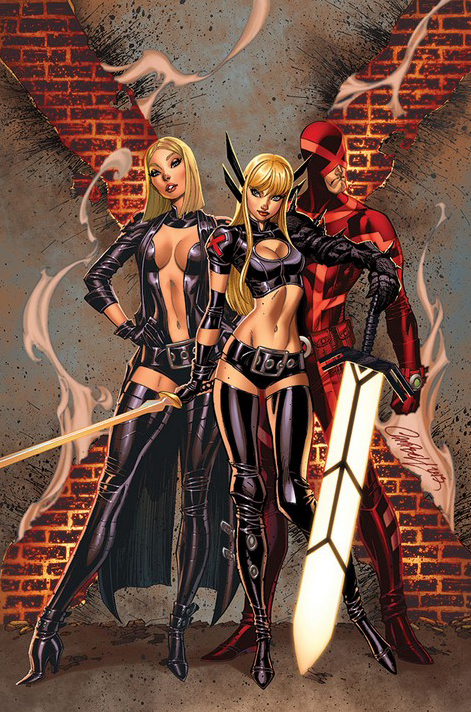
|

|
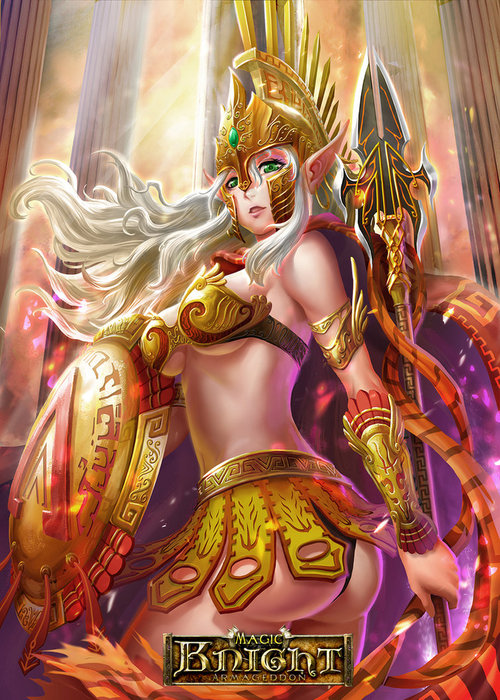
|
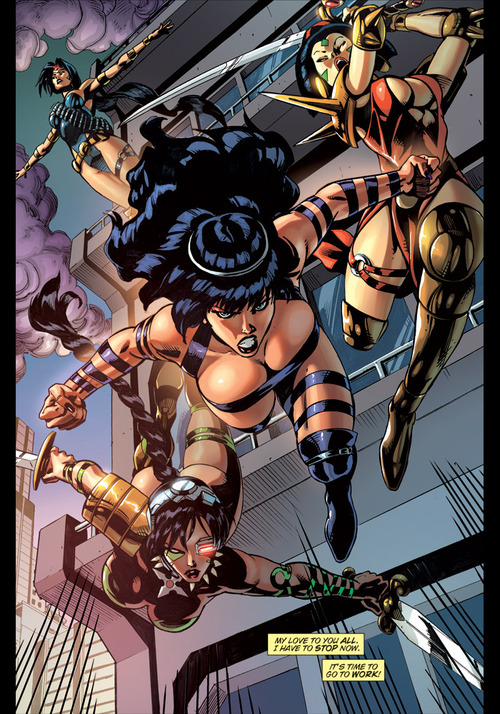
|
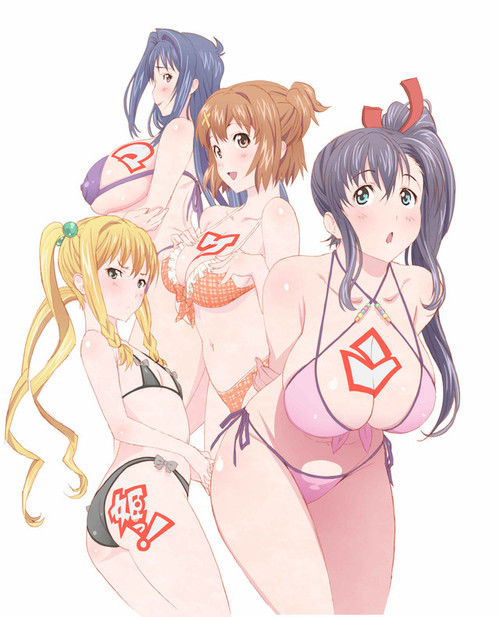
|
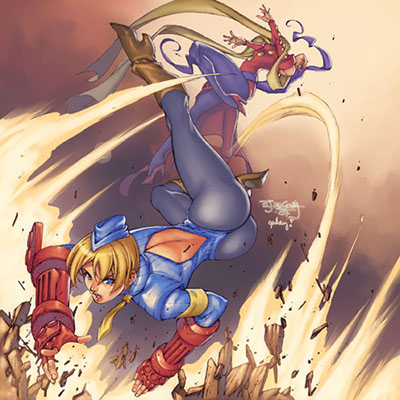
|
|
This is a psychoanalysis intertexuality discourse on how animated females in American superhero comic books, anime/manga, and video games are drawn in hypersexual ways.
A pychoanalysis deals "with human subjectivity, sexuality and the unconscious" (Rose 2012, 149).
While a discourse analysis looks into the "structure a way a thing is thought, and the way we act on the basis of that thinking"(Rose 2012, 190).
By doing a an intertextual discourse analysis, I will be looking at how several images put together structure how the female body is thought and looked at in these three animated mediums (Rose 2012, 190 & 191).
American superhero comic books are illustrated stories that focus on heroes that often have special powers.
While comic books started out as being targeted solely for young children, they now have much more mature content and have a larger age range for their audience.
Manga is the popularize comic books in Japan, while anime is the animated shows that are often based off manga series.
Manga and anime can be quite diverse in their mature content.
There are animes and mangas that are basically animated pornographies, while these also have hyper-sexualized females, they will not be included in this discourse.
Finally video games are electronic games that can be played on either game console or a computer.
Video games like the other two mediums have a wide range of content and age range for its audience.
I will be looking at images that come from series that have mature content and are targeted towards an audience of 13+.
The animated females that are found in comic books, manga/anime, and video games are often made extremely sexual by the way the creators draw them.
I will be using the theory of Mulvey, as a basis, to analyze the common ways females are drawn; from the bodies, positions, and clothing. Looking into how animated female characters are drawn is important, because in my opinion there is not enough scholarly attention on it and often people state that 'it's just the way things are.' While women in live media (non-animated) are often shown in sexually explicit ways and are quite often objectified, it is in my opinion that is talked about a lot more in scholarly works. There is little to no academic talk about how women are portrayed in animated mediums. Often scholars only focus on animated media meant for children. They focus on how mediums marketed for young boys have stronger ratio of male characters to female characters (Chu & McIntyre, 2009). This is probably due to the fact that throughout its history, animated medium have mainly been marketed towards young male audiences. Today though there are a lot more series marketed for young girls, though they still have hegemonic and patriarchal themes throughout their content (Chu & McIntre 2009). Researchers focus more on the characterizations of the characters, specifically how male and female characters fit into gender or sex stereotypes. Men characters are often more aggressive, rough, and strong, while female characters are more often portrayed as being simply beautiful and feminine (Chu & McIntyre 2009; Hou 2012). Characterizations have become more diverse in later years and not all animated features have absolute gender stereotyping. However, specifically in superhero cartoon shows, heroes or the good guys are positively portrayed or defined with traditional masculine terms, themes, and characterizations (Baker & Raney, 2007). For instance, strength and fighting abilities are shown to be more 'masculine' and are portrayed in positive ways for the heroes of the shows (Baker and Raney, 2007). Sex or gender stereotyping of characters is throughout media itself and is honestly a continuous cycle. Men though have "showed a greater agreement with sex stereotyping in the depiction of characters" and are more likely to believe that the characters "were positive role models" (Bresnahan & Kagawa, 207). All of these studies mentioned the impact cartoons can have on children and how the stereotyping or limited characterizations of the characters can affect children. Specifically how the limited characterizations or representation of female character can affect young girls. However, there was a little talk of how the characters were drawn and the impact it could have on children or people in general. |
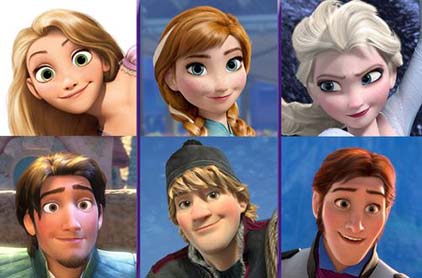
|
Animated females are drawn in much more limited way than their male counterparts in general.
In keeping with media focus for children, I will be briefly looking into Frozen, Disney's newest princess film.
Frozen's female lead characters' faces are pretty much identical to one other and to the previous Disney princess Rapunzel, from Tangle.
All of their faces have enormous eyes, small noses, wide smiles, wide cheeks, and delicate chins.
Giving them all 'pleasant' heart shape faces.
The male leads of these two movies are rather distinct from each other as all of them have stylized and distinct features.
The head of the Frozen animation, Lino DiSalvo, in an interview spoke about the difficult of animating female characters.
"Historically speaking, animating female characters are really, really difficult, 'cause they have to go through these range of emotions, but they're very, very — you have to keep them pretty and they're very sensitive to — you can get them off a model very quickly" (Amidi 2013). |
| DiSalvo articulates, I believe unknowing, the idea behind fetishistic scopophilia, that "the female figure is represented simply as a beautiful object of display" (Rose 2012, 161). It is important that female characters remain pretty throughout the whole feature. Even that aside, the idea of pretty is rather limited for animated females, especially in Disney. The Disney female characters have similar bodies from the defined and narrow waists to the demure shoulders, slender necks, and the slightly large heads. While these are cartoons and they are supposed to be exaggerated forms of the human body, female characters are often much more unrealistic and disproportionable in comparison to their male counterparts. It is all done for the sake of keeping the female leads pretty and pleasant to look at, because many creators and producers believe that if they weren’t, people would not wish to see the animated feature. |

|
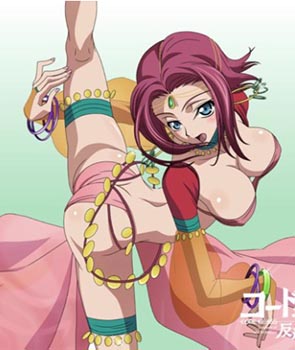
|
However animated works that are meant to appeal to a larger or older age range of an audience, go further than drawing their female characters as just 'pretty'. While they still do that, the female characters found in most comic books, anime/manga, and video games are drawn in sexually explicit ways. They are often the subject of the male gaze and are merely a fantasy for the male animators and target male audience. While Disney females have to remain pretty no matter what, these female characters have to be sexy no matter what, including a broke spine. |
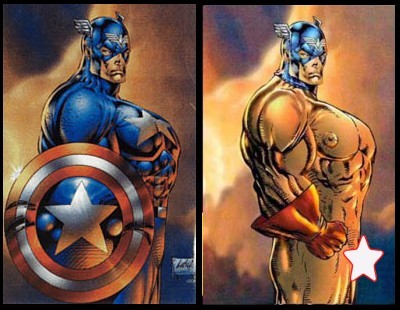
| While male characters are also drawn in disproportional ways that are meant to be visually pleasing. It is not the same as the way female characters are drawn. The way male characters are drawn is to be a fantasy for the male reader, someone they are supposed to identify with. While female characters are drawn as fantasies for the male reader, someone they want to look at and be with. There is not going to be a male character whose outfit barely contains his penis. Yet, a lot of female outfits are simply thongs ridding up into the character’s vagina. The way men and females are drawn is different and a lot of it does have to with the fact that the female body is sexualized beyond reason. For instance, a female’s breasts can be the size of basketballs and be coming out of her strip of cloth that covers her breast, but as long as the nipples are not showing, it is still considered to be appropriate. |
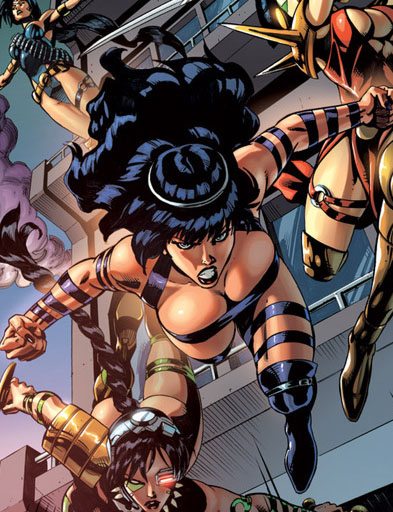
|
| The way these females are drawn in my opinion goes slightly beyond Mulvey's visual pleasure theory. A lot of these females are in active and even aggressive in their character depictions, but the way they are drawn limits them to mere sex objects. These female characters are often outnumbered by men (similar to cartoons) and plenty of them are passive and traditionally 'feminine'. However most if not all female characters that are found in these mediums directed at young men, are drawn with the "male gaze [projecting] its fantasy on the female figure" (Rose 2012, 159). It is so common place that Rumiko Takashashi, the female creator of the popular manga Inuyasha had to ask and make sure the animators of the anime would not draw any panty shots of the main female protagonist, Kagome. She requested that, because she did not want Kagome to be reduced to a 'fanservice character'. A lot of fans commented on how Kagome's panties never showed, despite the fact that she always wore a skirt. Strangely enough, no one ever commented that the male characters' underwear were never shown, despite the fact that a lot of them only wore robes. |
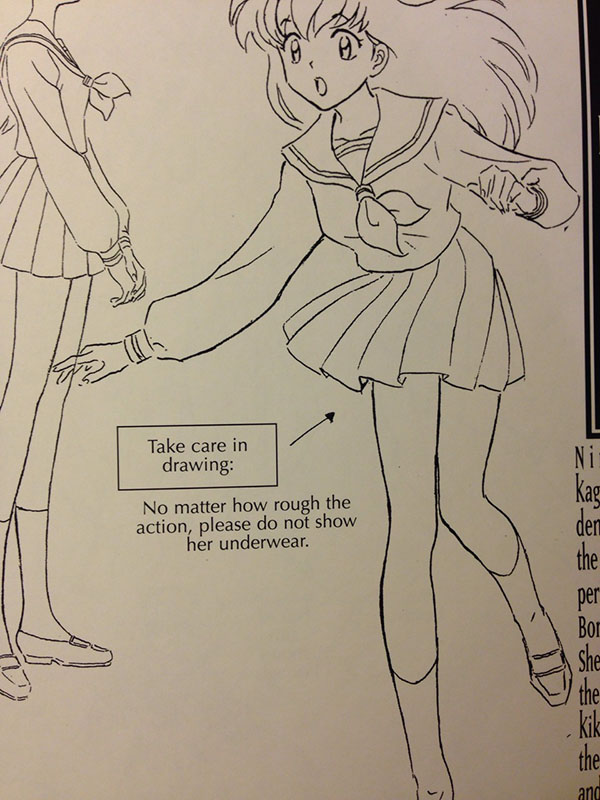
|
|
The comic book, anime and manga, and video game industries are not only run by a majority of men, but it is catered to them as well.
It does not seem to be changing any time soon. Trying to appeal to only men made more sense at one point, now though that nearly half of the audience for these mediums are female, there should be some kind of change (in my opinion).
The major companies of these three mediums are often unwilling to change the ways they portray their female characters to accommodate the shift of their audience.
A lot of times they say it is because that is not what the fans want, but a good amount of the fans (both male and female) do want to see a change.
I personally believe that it goes beyond these three mediums; our whole society objectifies the female body as often as it can.
Objectifying the female body can often maintain the stability of industries, as well as the fantasy and desire for the male audience (Schaare 2000).
People become accustom to the way females are portrayed and simply accept it as the norm.
I will be looking into the way these female bodies are drawn in comic books, anime/manga, and video games. Specifically the way they are drawn disproportionally; with their long torsos, tiny waists, gravity defining boobs, and perky butts. A lot of the female characters' anatomical structures are impossible, especially the positions they are drawn in. Most of the time female characters are drawn in a way to show off their assets to the viewer (breasts and butt). For a lot of the positions they are drawn in, their body parts would have to be separate from their bodies or their spines would have to be broken. I will also be looking into the clothes they are drawn in. Most of their clothing is designed to show off their 'sexy' bodies. Not only is the clothing meant to be revealing, but in the context of the fictional world, these outfits are beyond ridiculous and are completely useless in most situations. Finally I will be looking into one of the most important aspects of media, the audience or more specifically the fans. I am doing this because often times when females are drawn in these extremely provocative ways it is most often caused 'fanservice'. However, it is not always a service for the fans as many fans (particularly female fans) are often made uncomfortable by these depictions of the female body. |
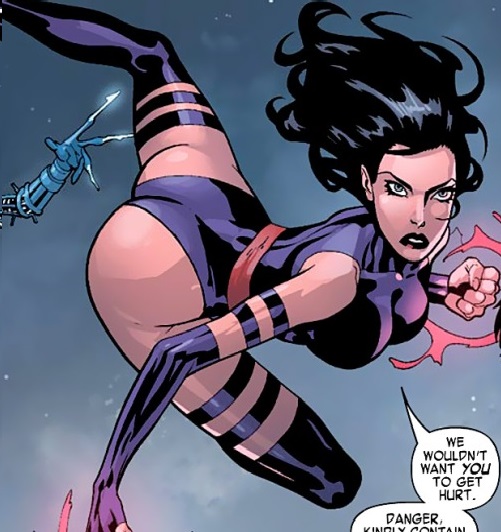
Word Cited:
Amidi, Amid. (2013). " 'Frozen' Head of Animation Says Animating Women is 'Really, Really Difficult." Cartoon Brew.
Baker, Kaysee, and Arthur A. Raney. 2007. "Equally Super?: Gender-Role Stereotyping of Superheroes in Children's Animated Programs." Mass Communication & Society, 10(1), 25-41.
Bresnahan, M., Inoue, Y., & Kagawa, N. (2006). "Players and Whiners? Perceptions of Sex Stereotyping in Anime in Japan and the US." Asian Journal Of Communication, 16(2), 207-217.
Chia-i, Hou. 2012. "Gendered Avatars: Representation of Gender Differences between Cartoons and Simulated Online Role Playing Games in Taiwan." China Media Research, 8(3), 81-91.
Chu, Donna, and Bryce T. McIntyre. 1995. "Sex Role Stereotypes On Children's TV In Asia A Content Analysis of Gender Role Portrayals in Children's Cartoons in Hong Kong." Communication Research Reports, 12(2), 206-219.
Mulvey, Laura. 2002. "Visual Pleasure and Narrative Cinema." Feminist Film Criticism.
Rose, Gillian. (2012).
Visual Methodologies: An Introduction to Researching with Visual Material.
London: Sage Publications Inc.: 3, 149-226.
Schaare, Pym. 2000. "Here's Looking at You: DECONSTRUCTING THE MALE GAZE." Social Alternatives, 19, 45-56.
a class taught by Bob Bednar in the Communication Studies Department at Southwestern University

